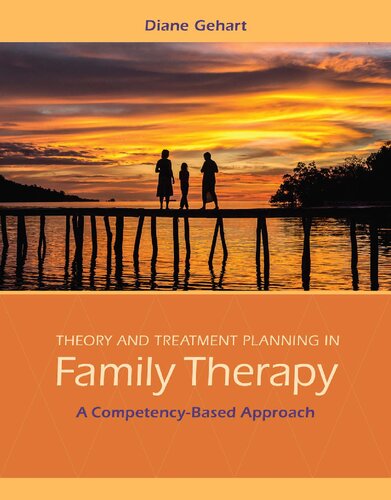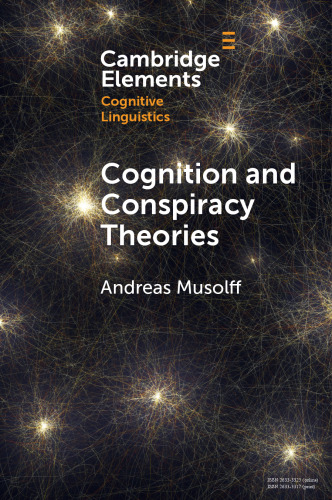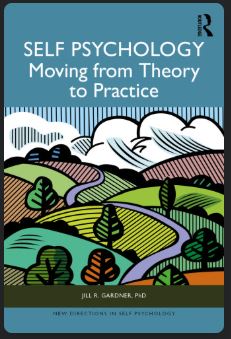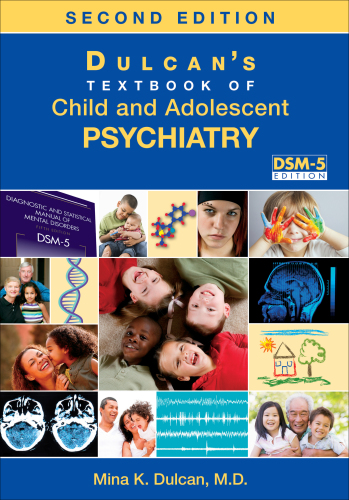Wilder and more unpredictable than anything Hollywood could conjure up, family ther- apy in the real world is enough to keep you on the edge of your seat. Some days it feels as though the room is lurched to a 45-degree angle and that the ship—once thought to be unsinkable—is going down. Other times your own head starts to spin in such a way that an exorcist might be warranted. By the time you begin to feel the Darth Vader death grip around your throat, you are ready to slip out to get some popcorn and catch your breath. But you can’t quite do that when you are cast in the leading role in a ther- apy session! So, there you are, still sitting with them. The entire Jackson family has their eyes fixed on the floor or a wall—anything but another person. The session is not going well. The otherwise jovial and free-spirited father has suddenly and harshly attacked his 8-year-old son for his lack of respect after the son used language and hand signals only allowed in R-rated movies. The heretofore demure and seemingly compliant mother then gives the father an equally punitive lam- basting for his overreaction. The 6-year-old “perfect” sister is frozen: silent with tears welling. This all unraveled in less than 60 seconds, before which time you thought things were going pretty well. In fact, you were starting to fantasize about whom you might thank as you accept the award for Most Brilliant Family Therapist of the Year. Now, you are the one expected to somehow rewrite the scene to ensure a reasonably happy—or at least not dramatic—ending. How are you going to do it? What are you going to say? Which issue are you going to address first? Who are you going to address first? What is your plan? You have some decisions to make, and less than 60 seconds to do so—no time for popcorn. You might be surprised—and relieved—to learn there is more than one effective way to handle the situation, just as you can imagine there are many poor ways to respond. The purpose of this book is to help you develop a clear sense of the responses that are most likely to succeed. The options you will learn for handling such a situation and many others like it come from family therapy theories. These theories describe how gen- erations of therapists have helped families like the Jacksons navigate the intimate, intense, and unpredictable adventure of helping couples and families learn to better express and experience their love for one another. The essence of becoming a competent therapist lies in the effective use of theory to inform what you do and say in session, and that is precisely the plot of this screenplay in which you will take center stage
چکیده فارسی
وحشیتر و غیرقابلپیشبینیتر از هر چیزی که هالیوود میتواند تداعی کند، خانوادهدرمانی در دنیای واقعی کافی است تا شما را روی صندلیتان نگه دارد. بعضی روزها به نظر می رسد که اتاق تا زاویه 45 درجه فرو رفته است و کشتی - که زمانی تصور می شد غرق نشدنی است - در حال سقوط است. مواقع دیگر سر خود شما شروع به چرخش می کند به گونه ای که ممکن است جن گیر اجباری شود. زمانی که شروع به حس کردن چنگال مرگ دارث ویدر در گلوی خود می کنید، آماده هستید تا از پاپ کورن بیرون بیایید و نفس خود را تازه کنید. اما وقتی در یک جلسه درمانی نقش اصلی را انتخاب می کنید، نمی توانید این کار را انجام دهید! بنابراین، شما اینجا هستید، هنوز با آنها نشسته اید. تمام خانواده جکسون چشمان خود را به زمین یا دیوار دوخته اند - هر چیزی جز شخص دیگری. جلسه خوب پیش نمی رود. این پدر شوخ و آزاده به طور ناگهانی و شدید به پسر 8 ساله خود به دلیل عدم احترام به او حمله کرده است. پس از آن، مادر فروتن و به ظاهر مطیع، پدر را به خاطر واکنش بیش از حدش به همان اندازه مجازات تنبیهی می کند. خواهر "کامل" 6 ساله یخ زده است: ساکت است و اشک می جوشد. همه اینها در کمتر از 60 ثانیه آشکار شد، قبل از آن زمان فکر می کردید همه چیز به خوبی پیش می رود. در واقع، شما شروع به خیال پردازی در مورد کسانی کرده اید که می توانید با دریافت جایزه بهترین خانواده درمانگر سال از آنها تشکر کنید. اکنون، شما کسی هستید که انتظار می رود به نحوی صحنه را بازنویسی کنید تا از پایان نسبتاً شاد - یا حداقل نه دراماتیک - اطمینان حاصل کنید. چطور میخواهی این کار را بکنی؟ چی میخوای بگی؟ اول به کدام موضوع می پردازید؟ قرار است اول با چه کسی صحبت کنید؟ برنامه شما چیست؟ شما باید تصمیماتی بگیرید و کمتر از 60 ثانیه برای انجام این کار وقت دارید—هیچ زمانی برای پاپ کورن ندارید. ممکن است تعجب کنید - و راحت شوید - از اینکه یاد بگیرید که بیش از یک راه موثر برای کنترل موقعیت وجود دارد، همانطور که می توانید تصور کنید راه های ضعیف زیادی برای پاسخ دادن وجود دارد. هدف این کتاب کمک به شما در ایجاد حس روشنی از پاسخ هایی است که به احتمال زیاد موفق می شوند. گزینه هایی که برای مدیریت چنین موقعیتی و بسیاری موارد دیگر مانند آن خواهید آموخت، از نظریه های خانواده درمانی سرچشمه می گیرند. این نظریهها توضیح میدهند که چگونه نسلهای درمانگر به خانوادههایی مانند جکسونها کمک کردهاند تا در ماجراجویی صمیمی، شدید و غیرقابل پیشبینی کمک به زوجها و خانوادهها بیاموزند که عشق خود را به یکدیگر بهتر ابراز و تجربه کنند. ماهیت تبدیل شدن به یک درمانگر شایسته در استفاده موثر از نظریه برای اطلاع رسانی به آنچه انجام می دهید و در جلسه می گویید نهفته است، و این دقیقاً طرح این فیلمنامه است که در آن شما در مرکز صحنه خواهید بود
ادامه ...
بستن ...
Author(s): Diane R. Gehart
Publisher: Cengage Learning, Year: 2016
ISBN: 9781305555891,9781285456430
ادامه ...
بستن ...
Making Connection: The Therapeutic Relationship 85
The Viewing: Case Conceptualization and Assessment 87
Targeting Change: Goal Setting 88
The Doing: Interventions 88
Putting It All Together 90
Case Conceptualization Template 90
Treatment Plan Template for Individual 90
Treatment Plan Template for Couple/Family 92
Research and the Evidence Base 93
Clinical Spotlight: Multisystemic Therapy 94
Goals 94
Case Conceptualization 94
Principles of Intervention 94
Tapestry Weaving: Diversity Considerations 95
Ethnic, Racial, and Cultural Diversity 95
Sexual Identity Diversity 95
Online Resources 96
References 97
Systemic Case Study: Blended Family Issues 98
Systemic Case Conceptualization 98
Systemic Treatment Plan 99
6 Strategic Therapy 103
Strategic Therapy 103
In a Nutshell: The Least You Need to Know 103
The Juice: Significant Contributions to the Field 103
Rumor Has It: The People and Their Stories 104
The Big Picture: Overview of Treatment 104
Making Connection: The Therapeutic Relationship 107
The Viewing: Case Conceptualization and Assessment 107
Targeting Change: Goal Setting 109
The Doing: Interventions 109
Putting It All Together 112
Case Conceptualization Template 112
Treatment Plan Template for Individual 113
Treatment Plan Template for Couple/Family 114
Research and the Evidence Base 116
Clinical Spotlight: Brief Strategic Family Therapy 116
Goals 116
Case Conceptualization 116
Principles of Intervention 117
Tapestry Weaving: Diversity Considerations 117
Ethnic, Racial, and Cultural Diversity 117
Sexual Identity Diversity 118
Online Resources 119
References 120
Strategic Case Study: Intergenerational Conflict in Chinese
American Family 120
Strategic Case Conceptualization 121
Strategic Treatment Plan 122
viii Contents
Copyright 2016 Cengage Learning. All Rights Reserved. May not be copied, scanned, or duplicated, in whole or in part. Due to electronic rights, some third party content may be suppressed from the eBook and/or eChapter(s).
Editorial review has deemed that any suppressed content does not materially affect the overall learning experience. Cengage Learning reserves the right to remove additional content at any time if subsequent rights restrictions require it.
7 Structural Family Therapy 125
Lay of the Land 125
In a Nutshell: The Least You Need to Know 125
The Juice: Significant Contributions to the Field 125
Rumor Has It: The People and Their Stories 128
The Big Picture: Overview of Treatment 128
Making Connection: The Therapeutic Relationship 129
The Viewing: Case Conceptualization and Assessment 130
Targeting Change: Goal Setting 132
The Doing: Interventions 132
Putting It All Together 135
Case Conceptualization Template 135
Treatment Plan Template for Individual 135
Treatment Plan Template for Couple/Family 137
Research and the Evidence Base 138
Clinical Spotlight: Ecosystemic Structural Family Therapy 139
Case Conceptualization 139
Goals 139
Interventions 139
Tapestry Weaving: Working with Diverse Populations 140
Cultural, Ethnic, and Socioeconomic Diversity 140
Sexual Identity Diversity 141
Online Resource 141
References 142
Structural Case Study: African American Family Adjusts
to Divorce 142
Structural Case Conceptualization 143
Structural Treatment Plan 144
8 Satir’s Human Growth Model 147
Lay of the Land 147
Common Assumptions and Practices 147
The Satir Growth Model 148
In a Nutshell: The Least You Need to Know 148
The Juice: Significant Contributions to the Field 148
Rumor Has It: The People and Their Stories 151
The Big Picture: Overview of Treatment 152
Making Connection: The Therapeutic Relationship 153
The Viewing: Case Conceptualization and Assessment 154
Targeting Change: Goal Setting 157
The Doing: Interventions 158
Interventions for Special Populations 160
Putting It All Together 161
Case Conceptualization Template 161
Treatment Plan Template for Individual 162
Treatment Plan Template for Couple/Family 163
Research and the Evidence Base 164
Research on Humanistic Principles 164
Tapestry Weaving: Working with Diverse Populations 165
Cultural, Ethnic, and Gender Diversity 165
Sexual Identity Diversity 165
Online Resources 166
References 166
Contents ix
Copyright 2016 Cengage Learning. All Rights Reserved. May not be copied, scanned, or duplicated, in whole or in part. Due to electronic rights, some third party content may be suppressed from the eBook and/or eChapter(s).
Editorial review has deemed that any suppressed content does not materially affect the overall learning experience. Cengage Learning reserves the right to remove additional content at any time if subsequent rights restrictions require it.
Experiential Case Study: Son Comes Out in Immigrant
Persian Family 167
Satir Case Conceptualization 168
Satir Treatment Plan 169
9 Symbolic-Experiential and Internal Family Systems 173
Lay of the Land 173
Symbolic-Experiential Therapy 173
In a Nutshell: The Least You Need to Know 173
The Juice: Significant Contributions to the Field 174
Rumor Has It: The People and Their Stories 174
The Big Picture: Overview of Treatment 175
Making Connection: The Therapeutic Relationship 175
The Viewing: Case Conceptualization and Assessment 176
Targeting Change: Goal Setting 178
The Doing: Interventions 179
Putting It All Together 181
Case Conceptualization Template 181
Treatment Plan Template for Individual 182
Treatment Plan Template for Couple/Family 184
Internal Family Systems Therapy 185
In a Nutshell: The Least You Need to Know 185
The Juice: Significant Contributions to the Field 185
Rumor Has It: The People and Their Stories 186
Making Connection: The Therapeutic Relationship 186
The Viewing: Case Conceptualization and Assessment 187
Targeting Change: Goal Setting 189
The Doing: Interventions 189
Putting It All Together 192
Case Conceptualization Template 192
Treatment Plan Template for Individual 192
Treatment Plan Template for Couple/Family 194
Research and the Evidence Base 195
Tapestry Weaving: Working with Diverse Populations 196
Cultural, Ethnic, and Gender Diversity 196
Sexual Identity Diversity 197
Online Resource 197
References 197
Symbolic Experiential Case Study: Cherokee Family Grieves
Mother 198
Symbolic-Experiential Case Conceptualization 198
Symbolic-Experiential Treatment Plan 200
10 Intergenerational and Psychoanalytic Family
Therapies 203
Lay of the Land 203
Bowen Intergenerational Therapy 203
In a Nutshell: The Least You Need to Know 203
The Juice: Significant Contributions to the Field 204
Rumor Has It: The People and Their Stories 206
The Big Picture: Overview of Treatment 207
Making Connection: The Therapeutic Relationship 207
The Viewing: Case Conceptualization and Assessment 207
Targeting Change: Goal Setting 211
x Contents
Copyright 2016 Cengage Learning. All Rights Reserved. May not be copied, scanned, or duplicated, in whole or in part. Due to electronic rights, some third party content may be suppressed from the eBook and/or eChapter(s).
Editorial review has deemed that any suppressed content does not materially affect the overall learning experience. Cengage Learning reserves the right to remove additional content at any time if subsequent rights restrictions require it.
The Doing: Interventions 211
Interventions for Special Populations 213
Putting It All Together 213
Case Conceptualization Template 213
Treatment Plan Template for Individual 214
Treatment Plan Template for Couple/Family 215
Psychoanalytic Family Therapies 217
In a Nutshell: The Least You Need to Know 217
The Juice: Significant Contributions to the Field 217
Rumor Has It: The People and Their Stories 217
The Big Picture: Overview of Treatment 218
Making Connection: The Therapeutic Relationship 218
The Viewing: Case Conceptualization and Assessment 219
Targeting Change: Goal Setting 221
The Doing: Interventions 221
Putting It All Together 222
Case Conceptualization Template 222
Treatment Plan Template for Individual 222
Treatment Plan Template for Couple/Family 224
Research and the Evidence Base 225
Tapestry Weaving: Working with Diverse Populations 226
Gender Diversity: The Women’s Project 226
Ethnicity and Culture Diversity 226
Sexual Identity Diversity 227
Online Resources 228
References 228
Intergenerational Case Study: African American Family Launching
Children 229
Intergenerational Case Conceptualization 229
Intergenerational Treatment Plan 231
11 Cognitive-Behavioral and Mindfulness-Based Couple
and Family Therapies 233
Lay of the Land 233
Behavioral and Cognitive-Behavioral Family Therapies 234
In a Nutshell: The Least You Need to Know 234
The Juice: Significant Contributions to the Field 234
Rumor Has It: The People and Their Stories 235
The Big Picture: Overview of Treatment 235
Making Connection: The Therapeutic Relationship 236
The Viewing: Case Conceptualization and Assessment 237
Targeting Change: Goal Setting 240
The Doing: Interventions 241
Putting It All Together 246
Case Conceptualization Template 246
Treatment Plan Template for Individual 247
Treatment Plan Template for Couple/Family 249
Mindfulness-Based Therapies 250
In a Nutshell: The Least You Need to Know 250
Gottman Method Couples Therapy 255
In a Nutshell: The Least You Need to Know 255
Debunking Marital Myths 256
The Big Picture: Overview of Treatment 256
Making Connection: The Therapeutic Relationship 257
Contents xi
Copyright 2016 Cengage Learning. All Rights Reserved. May not be copied, scanned, or duplicated, in whole or in part. Due to electronic rights, some third party content may be suppressed from the eBook and/or eChapter(s).
Editorial review has deemed that any suppressed content does not materially affect the overall learning experience. Cengage Learning reserves the right to remove additional content at any time if subsequent rights restrictions require it.
The Viewing: Case Conceptualization and Assessment 257
The Doing: Interventions 259
Research and the Evidence Base 260
Tapestry Weaving: Working with Diverse Populations 261
Ethnic, Racial, and Cultural Diversity 261
Sexual Identity Diversity 263
Online Resources 264
References 264
Cognitive-Behavioral Case Study: Korean Family Conflict Over
Grades 266
Cognitive-Behavioral Case Conceptualization 267
Cognitive-Behavioral Treatment Plan 269
12 Solution-Based Therapies 271
Lay of the Land 271
Solution-Based Therapies 272
In a Nutshell: The Least You Need to Know 272
Common Solution-Based Therapy Myths 272
The Juice: Significant Contributions to the Field 273
Rumor Has It: The People and Their Stories 273
The Big Picture: Overview of Treatment 275
Making Connection: The Therapeutic Relationship 276
The Viewing: Case Conceptualization and Assessment 277
Targeting Change: Goal Setting 279
The Doing: Interventions 283
Interventions for Specific Problems 286
Putting It All Together 288
Case Conceptualization Template 288
Treatment Plan Template for Individual 288
Treatment Plan Template for Couple/Family 290
Solution-Oriented Ericksonian Hypnosis 291
Difference From Traditional Hypnosis 291
The Big Picture: Overview of Treatment 291
The Doing: Interventions 292
Research and the Evidence Base 292
Tapestry Weaving: Working with Diverse Populations 293
Ethnic, Racial, and Cultural Diversity 293
Sexual Identity Diversity 294
Online Resources 295
References 295
Solution-Based Therapy Case Study: Interfaith/Intercultural Couple
Considers Marriage 297
Solution-Based Case Conceptualization 297
Solution-Based Treatment Plan 299
13 Narrative Therapy 301
Lay of the Land 301
Narrative Therapy 302
In a Nutshell: The Least You Need to Know 302
The Juice: Significant Contributions to the Field 302
Rumor Has It: The People and Their Stories 303
The Big Picture: Overview of Treatment 303
Making Connection: The Therapeutic Relationship 304
The Viewing: Case Conceptualization and Assessment 305
Targeting Change: Goal Setting 306
xii Contents
Copyright 2016 Cengage Learning. All Rights Reserved. May not be copied, scanned, or duplicated, in whole or in part. Due to electronic rights, some third party content may be suppressed from the eBook and/or eChapter(s).
Editorial review has deemed that any suppressed content does not materially affect the overall learning experience. Cengage Learning reserves the right to remove additional content at any time if subsequent rights restrictions require it.
The Doing: Interventions 307
Externalizing Questions 310
Interventions for Specific Problems 316
Putting It All Together 316
Case Conceptualization Template 316
Treatment Plan Template for Individual 317
Treatment Plan Template for Couple/Family 319
Research and the Evidence Base 320
Tapestry Weaving: Working with Diverse Populations 320
Ethnic, Racial, and Cultural Diversity 320
Sexual Identity Diversity 322
Online Resources 323
References 323
Narrative Case Study: Multiethnic Gay Couple 324
Narrative Case Conceptualization 325
Narrative Treatment Plan 327
14 Collaborative Therapy and Reflecting Teams 329
Collaborative Therapy and Reflecting Teams 329
In a Nutshell: The Least You Need to Know 329
The Juice: Significant Contributions to the Field 330
Rumor Has It: The People and Their Stories 331
The Big Picture: Overview of Treatment 332
Making Connection: The Therapeutic Relationship 333
The Viewing: Case Conceptualization and Assessment 335
Targeting Change: Goal Setting 336
The Doing: Interventions and Ways of Promoting Change 337
Reflecting Teams and the Reflecting Process 340
Putting It All Together 342
Case Conceptualization Template 342
Treatment Plan Template for Individual 343
Treatment Plan Template for Couple/Family 344
Clinical Spotlight: Open Dialogue, an Evidence-Based Approach to
Psychosis 346
Outside the Therapy Room 346
Research and the Evidence Base 347
Tapestry Weaving: Working with Diverse Populations 348
Ethnic, Racial, and Cultural Diversity 348
Sexual Identity Diversity 349
Online Resources 350
References 350
Collaborative Case Study: Pakistani/Indian Couple with Sexual
Abuse History 352
Postmodern Case Conceptualization 352
Postmodern Treatment Plan 354
15 Evidence-Based Treatments in Couple and Family
Therapy: Emotionally Focused Therapy and Functional
Family Therapy 357
Lay of the Land 357
Myths About Evidence-Based Treatments 357
Emotionally Focused Therapy 358
In a Nutshell: The Least You Need to Know 358
The Juice: Significant Contributions to the Field 359
Contents xiii
Copyright 2016 Cengage Learning. All Rights Reserved. May not be copied, scanned, or duplicated, in whole or in part. Due to electronic rights, some third party content may be suppressed from the eBook and/or eChapter(s).
Editorial review has deemed that any suppressed content does not materially affect the overall learning experience. Cengage Learning reserves the right to remove additional content at any time if subsequent rights restrictions require it.
Rumor Has It: The People and Their Stories 360
The Big Picture: Overview of Treatment 361
Making Connection: The Therapeutic Relationship 362
The Viewing: Case Conceptualization and Assessment 364
Targeting Change: Goal Setting 366
The Doing: Interventions 367
Putting It All Together 369
Case Conceptualization Template 369
Treatment Plan Template for Couple 370
Treatment Plan Template for Family 372
Tapestry Weaving: Diversity Considerations 373
Ethnic, Racial, and Cultural Diversity 373
Sexual Identity Diversity 373
Evidence Base 374
Functional Family Therapy 374
In a Nutshell: The Least You Need to Know 374
The Juice: Significant Contributions to the Field 375
Rumor Has It: People and Places 375
The Big Picture: Overview of Treatment 376
Making Connection: The Therapeutic Relationship 376
The Viewing: Case Conceptualization and Assessment 377
Targeting Change: Goal Setting 380
The Doing: Interventions 381
Putting It All Together 384
Case Conceptualization Template 384
Treatment Plan Template for Family 386
Tapestry Weaving: Diversity Considerations 387
Ethnic, Racial, and Cultural Diversity 387
Sexual Identity Diversity 388
Evidence Base 388
Online Resources 389
References 389
FFT Case Study: Mexican American Family with
Substance-Abusing Teen 390
FFT Case Conceptualization 390
FFT Treatment Plan 392
16 Evidence-Based Group Treatments for Couples and
Families 395
Lay of the Land 395
Brief Overview of Types of Groups 395
Psychoeducational Groups or “Classes” 395
Process Groups 396
Combined Groups 396
General Group Guidelines 396
Number of People 396
Open Versus Closed Groups 397
Group Selection: Who’s in Your Group? 397
Group Rules 398
Evidence-Based Couple and Family Groups 398
Psychoeducational Multifamily Groups for Severe Mental Illness 398
Groups for Partner Abuse 400
Relationship Enhancement Programs 402
Parent Training 403
xiv Contents
Copyright 2016 Cengage Learning. All Rights Reserved. May not be copied, scanned, or duplicated, in whole or in part. Due to electronic rights, some third party content may be suppressed from the eBook and/or eChapter(s).
Editorial review has deemed that any suppressed content does not materially affect the overall learning experience. Cengage Learning reserves the right to remove additional content at any time if subsequent rights restrictions require it.
Summary 404
Online Resources 404
References 405
PART III Cross-Theoretical Case Conceptualization
and Integration 407
17 Cross-Theoretical Case Conceptualization
and Integration 409
Knowing Where to Look 409
Case Conceptualization and the Art of Viewing 410
Theory-Specific vs. Cross-Theory Case Conceptualization 410
Benefits of Cross-Theoretical Conceptualization 410
Cross-Theoretical Conceptualization vs. Integration 410
Integration Options 411
Overview of Cross-Theoretical Case Conceptualization 413
Introduction to Client and Significant Others 413
Presenting Concern 414
Background Information 415
Strengths and Diversity Resources 416
Personal or Individual Strengths 416
Relational or Social Strengths and Resources 418
Spiritual Resources 418
Diversity Resources and Limitations 419
Family Structure 419
Family Life Cycle Stage 421
Boundaries: Regulating Closeness and Distance 421
Triangles and Coalitions 423
Hierarchy Between Child and Parents 423
Complementary Patterns 424
Satir’s Communication Stances 424
Gottman’s Divorce Indicators 426
Problem Interaction Patterns 427
Assessing Interaction Patterns 428
Systemic Hypothesis 428
Intergenerational Patterns 429
Attachment Patterns 431
Solution-Based Assessment 431
Previous Solutions That Did Not Work 431
Exceptions and Unique Outcomes: Previous Solutions That Did Work 432
Miracle Question Answer 432
Postmodern and Cultural Discourse Conceptualization 433
Dominant Discourses 433
Client Perspectives 434
Case Conceptualization, Diversity, and Sameness 435
Online Resources 436
References 436
Case Conceptualization Form 437
Name Index 445
Subject Index 447
ادامه ...
بستن ...










